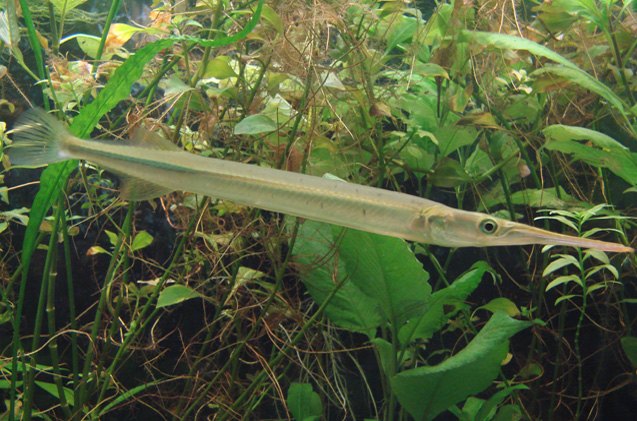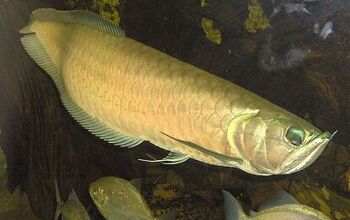Gar


About Gar
Gars are a large, predatory species of fish that should only be kept by very experienced aquarists. Some gars grow to over 10 feet in length and simply cannot be kept in home aquariums. Smaller varieties of gar like the Needlenose gar and the Florida gar that are kept in aquariums also require very specialized care and it is important that the aquarist does his research before attempting to raise them.
Gars are characterized by their long bodies and similarly elongated jaws. Their bodies are covered in heavy ganoid scales.
Gars are a large, predatory species of fish that should only be kept by very experienced aquarists.
Most gars originate from North and Central America.
Gars are drab in color and come in shades of brown, grey and black.
Gars are a large growing species of fish and should only be kept in large aquariums. They are an extremely hardy species of fish and can adapt to and survive in a wide range of water conditions. They also have modified swim bladders which function as lungs and can thus survive in water conditions that most other fish couldn’t.
Gars are opportunistic predators. In the wild, they often hide in caves and crevices and thrive when given similar hiding spaces in the aquarium. Although predatory, gars are not overly aggressive towards larger species of fish that they do not consider as prey. In their natural habitat, gars live in loosely knit schools and should be kept in groups of 3-6.
Due to their meaty diets, gars produce a significant amount of waste. Water filtration is therefore a primary concern when raising them in community aquariums. It is recommended that aquarists use multiple filtration systems and carry out weekly water changes to the keep the water conditions of the gar aquarium at healthy levels.
Gars are fiercely carnivorous and should be fed on a diet of live, feeder fish such as minnows and shrimp. However, it is possible to train gars from a young age to accept most frozen and pellet based foods.
Gars are a large growing species of fish and should only be kept in large aquariums.
Reports of successful gar spawning in the aquarium are extremely rare.
Aquarium varieties
Needlenose Gar, Florida Gar, etc.
Photo credit: Brian.gratwicke/Wikimedia; Guérin Nicolas/Wikimedia

Amy Tokic, Editor of PetGuide.com, is a passionate animal lover and proud pet parent of Oscar, a Shih Tzu/Chihuahua cross, and Zed, a Japanese Chin. Her love of animals began in kindergarten, when she brought her stuffed dog Snoopy into class with her every day. Now, she writes about her adventures in pet ownership and tirelessly researches products, news and health related issues she can share with other animal enthusiasts. In her free time, Amy loves perusing used book and record stores, obsessing over the latest pet products available and chasing squirrels with wild abandon (a habit attributed to spending too much time with her pooches).
More by Amy Tokic
























